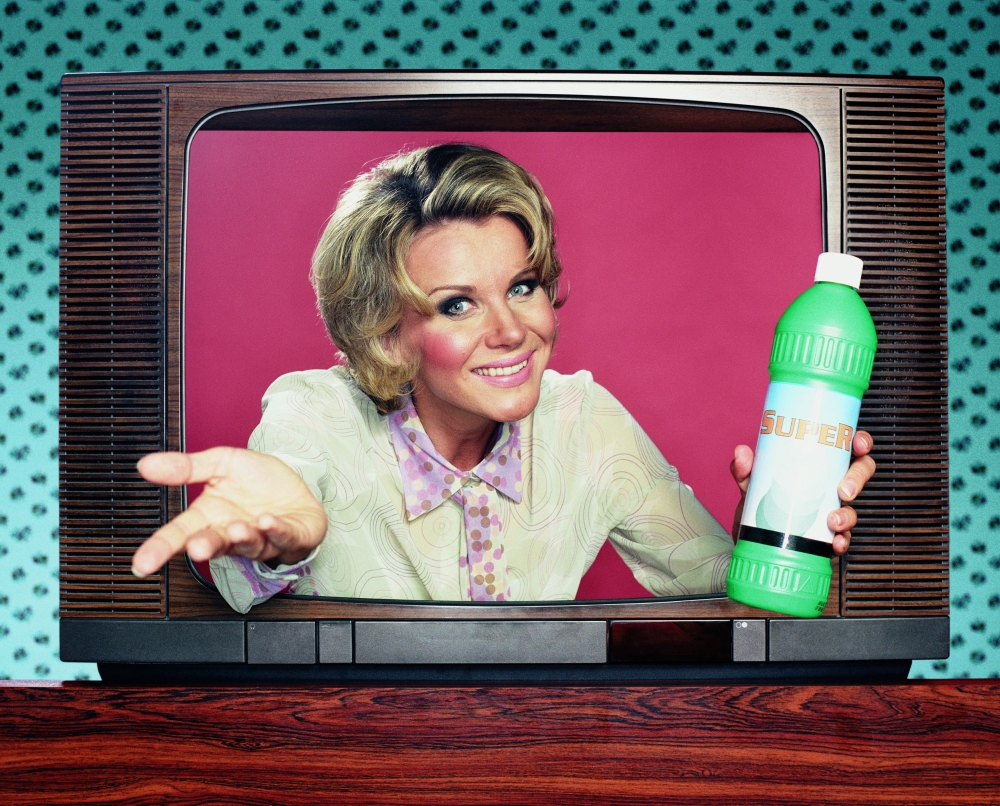Peak Nostalgia
27 Nov 2017

The role of commercial creativity has surely, finally, hopefully reached a tipping point.
I love the Tango ads from the 90s: bonkers, visceral, unsettling anarchy, all wrapped up in the dulcet tones of Ray Wilkins. They effortlessly became part of popular culture, to the extent that kids up and down the country - including me - charged around the playground essentially slapping each other in the name of fun, blindly screaming the ad strapline, verbatim.
Back in 2017 and it’s worth thinking about that for a second – kids gleefully re-enact TV ads in their own time as a badge of cultural awareness and credibility…given popular culture today, that’s quite an odd thought. I’ll check with my nieces but I’m pretty sure no one is going around in break time today pretending to be the Trivago lady or Gio Compario.
Tango, alongside the likes of Pot Noodle and Cadbury nailed ‘brand marketing’ of the time - creating an aura around itself that triggered an emotional reaction that was actually based very loosely, if at all, on the quality or benefit of the ingredients.
Recently, I’ve seen numerous misty-eyed industry articles and thought-pieces about how we can learn from the bravery of famous ad campaigns like this. They are all fantastic stories of commercial creativity but surely, it’s now time to focus on how we re-tune the creative talent in our industry to better serve the modern needs of brands and organisations? How do you build and maintain trust with people? How do you create platforms that enable businesses to ‘do’ and not just ‘say’? Is it about doing less but doing it better? and so on.
Modern day consumers have wised up to brands who hide behind vacuous propositions and rely on huge paid media budgets. The digital age has effectively debagged the traditional FMCG creative paradigm. We no longer live in a world where you can create a comedic, fluffy dimension to promote a maize snack or a gloopy, vaguely cheese-related spread and sit back and watch sales increase. However, for many people in the industry, provenance and purpose just don’t get the creative juices flowing in the same way. But is that because we focus most creative efforts on one part of a brand’s multiple activities? While traditional soft metrics still play a vital part, the role for agency creativity should be to increasingly drive change further up-stream, setting about solving business objectives that go beyond ad recall and brand salience.
This has happened in pockets – Volvo Life Paint is a great example – but the challenge is evolving them from campaigns into everyday business priorities. Clients understandably find it challenging to incorporate 3rd party ideas into the fabric of their business but this is where the value is. Clients need help to be self-aware. When you’re a client you get sucked into a universe that makes looking out very challenging. Agency thinking then becomes an essential part of keeping a brand culturally aware and relevant. You only have to look at the Pepsi debacle to see what happens when you get stuck in your own universe. But, essentially, what we offer must show we understand how to grow their business, not just promote the brand.
It’s not news that people don’t like ads as much as they used to. Even this year's flurry of Christmas schmaltz has fallen a bit flat. Perhaps this is the last bastion of ‘ads as culture’ falling, in the traditional sense? Indeed, the role of TV, for so long the prime generator of this culture, looks to be shifting dramatically. Businesses that have been born in the digital world, like Amazon, Airbnb, Deliveroo, Sonos, etc., earn their way into peoples’ lives through the quality of their service or product and the subsequent word of mouth. These guys seem to be maximising digital assets, PR, CRM, social before they use brand TV and OOH to top up awareness. As Scott Cook claims: “A brand is no longer what we tell the consumer it is – it’s what consumers tell each other it is.”
This is backed up by the stark findings of the Edelman Trust Barometer which essentially states that the traditional pillars of trust in society (media, politics, business, religion) are being eroded in the face of a population who would rather put faith and trust in each other than faceless institutions talking down to them. Therefore, business models need to focus on creating a service or a product that actually adds value to people’s lives. In essence, you can’t market or PR your way out of being a shitty company anymore.
If this is the way modern brands and businesses are born, with others following rapidly, it makes sense for agencies to redeploy creativity to fit with how they grow. A few areas spring to mind:
- Making more of programmatic. Whilst these technologies are getting more powerful, the creative is becoming more bland and banal. We need to embrace, not bemoan. Ad tech has (understandably) a pretty horrible reputation for frustrating people’s online experience. We are not going back to five channels on TV so we have to move forward and make more of what we have in front of us now. It is undoubtedly a big challenge but we must find a way to talk to (and with) people on a more human level, not like creepy, desperate, digital street hawkers.
- Creative and media strategy should realign and break down channel agendas. Collaboration in general is still a gaping hole across the industry but this dynamic in particular is creating expensive inertia – unified insights, people first thinking, cost transparency and shared accountability from creative to ROI should be the expectation. Ideally, the relationship between creators, media buyers, media owners and ad tech also becomes increasingly connected
- Creative ownership to creative democracy. This does not mean everyone is a creative. The patience and craft that is required to bring a great idea to life, whichever the channel, must be respected. At the same time, we need to create cultures that allow business growing ideas to come from more places than just creative teams. Art directors and copy writers can’t and shouldn’t be doing it alone for no other reason than no one person or team has all the answers. It’s about experience from across the mix (and beyond) along with an open, collaborative mind set.
In the end though, it won’t be the ruminations of industry people that actually effect this kind of change – peoples’ hands will be forced. Recent events suggest this could be a sudden rather than sluggish shift:
- Earlier this year, consultancy Forrester stated the CMO role could be getting rebranded as Chief Growth Officer, taking on marketing, strategy and commercial responsibilities. This has happened at Coke, Colgate and other big traditional brands. I imagine that group of responsibilities are a given for any senior marketer working at Uber or Netflix.
- More recently, Amazon Prime Video gained the live and distribution right to Tennis’ ATP Tour. Not an earth-shattering scalp on the surface but it gets interesting when you think about the World Cup, Super Bowl or Premier League moving to a platform like Amazon or Facebook. Subscription models like Amazon mean no ads and more people-centric platforms like Facebook and YouTube give you the choice to skip or scroll. The huge effort and money that goes into video based creative and buying could possibly be completely re-evaluated.
The role of commercial creativity is changing, but that doesn’t mean advertising is dead. Rigid, arrogant, channel led, overpriced, silo structured advertising IS dead.
Advertising focused on audience interest, growth, channel fluidity, transparency and collaboration, is only just beginning.
_
Wax/On is a creative start-up that has joined forces with independent media agency MC&C. Together we’re putting creative and media back together for modern brands and organisations.
To get in touch: ben@wearewaxon.com / paul@wearewaxon.com

Please login to comment.
Comments